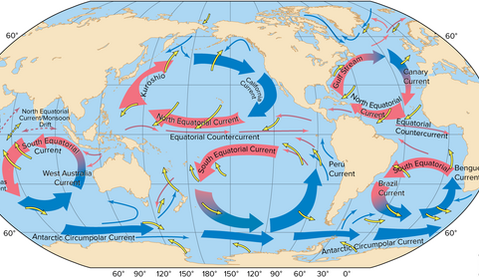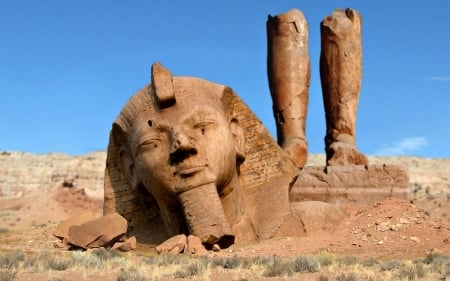- cross-posted to:
- map_enthusiasts@sopuli.xyz
- cross-posted to:
- map_enthusiasts@sopuli.xyz
Well duh! That’s because the big black line you see on all the maps keeps the storms from crossing over
Make the north hemisphere great again!
For anyone else wondering about that single path near the southern part of Brazil: https://en.m.wikipedia.org/wiki/Hurricane_Catarina
They could add 2 more if they updated the map into this year.
What 2? According to the wiki this is still the only one on record.
We had two cyclones in the last two/three months.
I don’t think they were strong enough to be considered hurricane strength like Catarina. It’s the only one on record.
They were stronger than usual (we actually had several cyclones this year if we count all of them) so I’m assuming that’s what OP referred to. I still slept through one of them without even noticing it so nowhere as strong as Catarina.
This month’s winds reached 2/3 the speed of Catarina.
Well that is super interesting. Was wondering if that was a visual artifact.
Note to self: To avoid hurricanes, move to the equator.
Or to Germany
deleted by creator
deleted by creator
Thats because when they come south of the equator they become cyclones
Yeah they shouldn’t have any color like that in Asia. They only get Typhoons.
Dont k ow wtf just happened, but when i looked at that map, it was wrong. I think it was flipped upside sown and zoomed in, but the coloured bits were the right way up and not zoomed.
I could not figure out the shape of the earth, couldnt see any continents i recognized. When i saw what i assumed was Antarctica at the top, i assumed the map was flipped, but i still couldn’t find any countries.
I saw a comment about a single line near brasil, and when i saw it, it was on the land.
I scrolled further and found a map with arrows suowing the circular motion of the winds and when i went back up the map was flipped the correct way, zoomed out and the single line was off the coast of brasil.
But obviously thats not possible so i just had another look and realised. I saw the land as water and the water as land. It switched when i looked away and now i cant switch it back.
This was trippy as hell.
Oh shit i read your comment and went back up and could switch to see it that way. Fuck that’s weird.
So if climate change starts off some freak wave of endless hurricanes… move to the equator got it
Yes, you will be safe from hurricanes while you are baked alive by global warming.
Well, unfortunately it’ll become a blistering hellscape.
Well, it might fuck up the wind currents and allow even bigger storms that could cross the equator
I thought the issue was the coriolis effect would reverse the hurricane’s spin direction? Could one survive this and reform?
Give it a couple decades and we may just find out!
I’m wondering if the Coriolis effect is directly responsible for the spin direction of storms or if it’s only responsible for the spin of the wind currents, which then forces the storms in one direction or the other.
If it’s indirect, then large changes in the currents might allow those storms 🤔
Great question
Fuq
At least until the magnetic poles flip and then all hell breaks loose (again).
A tropical disturbance has crossed the equator. One such disturbance occurred June 27, 2008 in the Atlantic basin (south to north) that retained its clockwise motion for some time:
So not completely impossible
It’s like a reverse Grand line
Anybody have an ELI5?
I believe it’s because currents of air rotate in the opposite direction. So to cross the equator the air would have to pass a boundary of global air currents which are going counter to the hurricane’s motion. See this picture for a reference.

I knew it. Hurricanes are magnetic.
Fuckin hurricanes, how do they work?
Trump should’ve bombed Hurrican Dorian with ICP instead.
Electromagnetic
I don’t speak Spanish, sorry.
So the thing about the toilet water spinning in the other direction in the south hemipshere is true?
No - the direction the toilet water spins depends on the small scale vortices created when you flush. The Coriolis effect is slow - it acts at a much longer time scale.
In theory, yes. However other factors such as the shape of the drain, the shape of the toilet bowl, and any small initial motion in the water, usually completely overwhelm the coriolis effect. You would only be able to observe it under extremely carefully controlled conditions: extremely still water, and a completely symmetrical toilet bowl perfected to extreme, micron precision.
For something like a toilet where water is staying into it, the force of the spray itself is all that really matters. But, for water that is still (pulling the drain on a bathtub), then yes, absolutely this is true. The spin will be the same as a hurricane (depends in hemisphere), and for the same reason.
What about a bathtub that sits exactly on the ecuator?
Technically, no spinning from the Coriolis effect. Realistically, something tiny like you reaching into the water will create enough movement that you’ll get it going one way or another.
Coriolis effect. Things spin opposite direction across the equator due to how the earth spins.
It’s virtually impossible for a hurricane to cross the equator.
Because of things like Coriolis effect and convective currents, there just aren’t winds that blow across the equator, not at the scale that would blow a hurricane from one hemisphere to the other anyway.
Winds tend to blow along and away from the equator, not across it.
For ELI5, think of it this way. The earth is spinning, and at the equator it’s moving really fast, like 900 mph. At the north pole, the earth isn’t moving at all, so in the northern hemisphere, you can picture all land to the north of you as moving slower than you, and land to the south as moving faster than you. If you run south, it would spin you because it’s moving ‘sideways’ faster than you are. Cross the equator and suddenly it gets slower as you run south, literally putting the brakes on your spin.
The ancient city of R’yleh is rumored to be somewhere along the equatorial line. In ancient times was known as the torrid zone, an infernal place which claimed all the lives of those that cross it. Hurricanes are a force of nature and, since no two forces of nature can overlap (like a volcano during a storm or an earthquake and a flood) the hurricane can’t go where ancient ones dwell.
So we wanna live in South America, got it
Nah, dude. If you want to avoid hurricanes, you gotta go to Antarctica. Just look at the map, it’s just got cool blue arrows.
I recommend Uruguay, specifically. That little country is miles ahead of the rest of the continent in several aspects.
Or, if you are American and wealthy enough to own a house (in the USA), you’re likely wealthy enough to buy a good house in Brazil and retire with enough passive income to ignore all of this country’s problems.
Seems like the equator would make a perfect location for a wind farm. Looking at this map that was posted above, just have rows and rows of them that follow the equator.

The equator doesn’t have strong wind though? And what does that map of ocean currents have to do with that?
What’s the farthest we can transport electricity? Seems like that may be pushing the boundary a bit. I wonder if it would be possible to have a world-wide electricity grid.
Yes absolutely, feasible is another thing but possible it absolutely is. There already exist worldwide conductor networks.
You couldn’t have anything cross the ocean because transmission losses would be horrendous, but within the continents would be feasible I think
The longest transmission line in the world is around 2500km and the Atlantic at its shortest point is around 2800 so it’s not impossible to do it’s more would it be worth it.
deleted by creator
floating wind turbines already exist
deleted by creator
I bet solar farm would have a better output in there.
Checkers mate, atheists.
Way to jinx it.
Do you realize what this means? We can stop hurricanes dead in their tracks by moving the equator around.
The equator is an imaginary line, and therefore has zero mass. By wobbling the rotational polarity of the planet’s rotational wobbling we can probably just cut the hurricanes in half.
whoa











